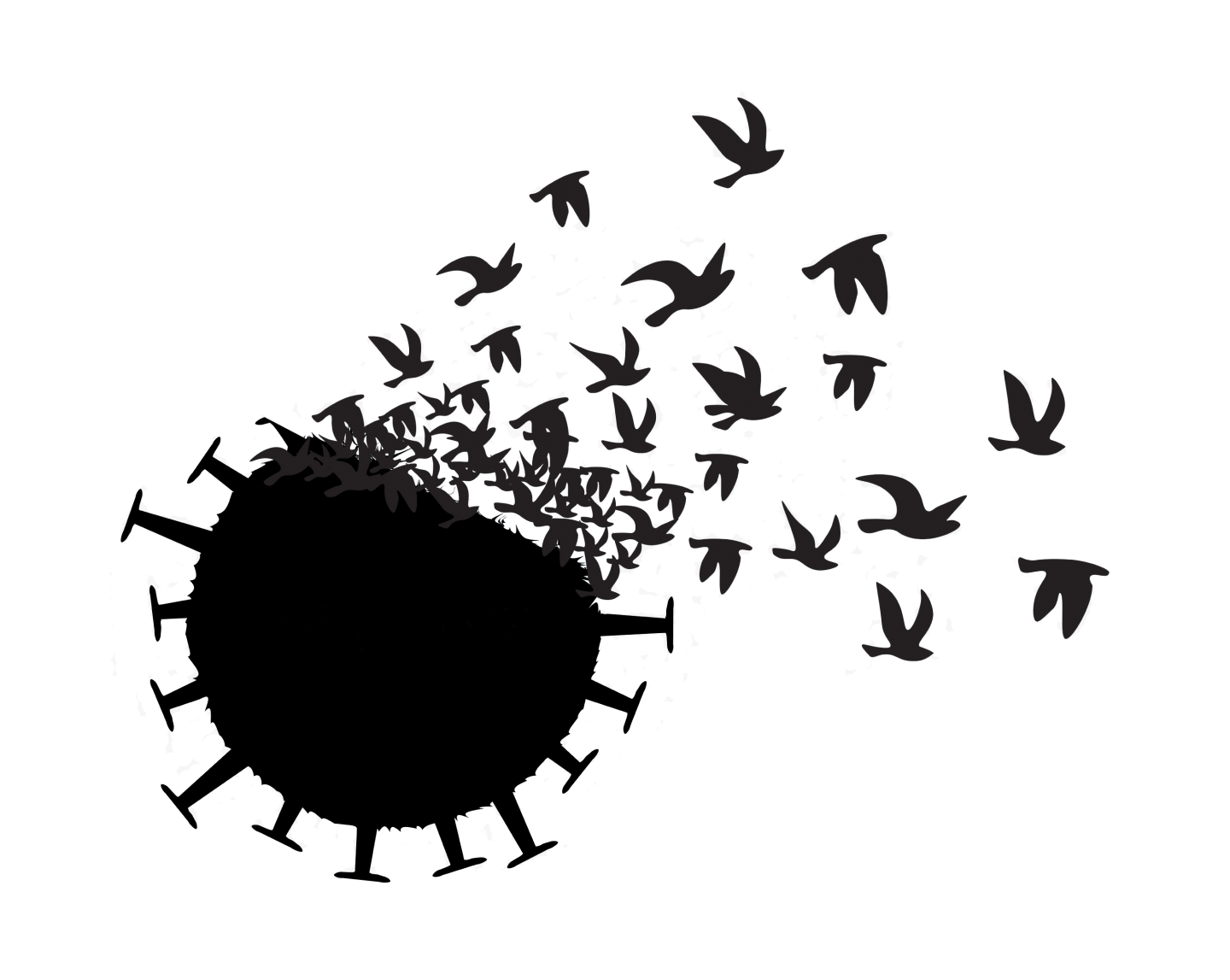As the United States approaches the second anniversary of its initial COVID-19 shutdowns, we're daring to dream about what the end of the pandemic might look like. With omicron cases plummeting, indoor mask mandates in every state but Hawaii are set to expire—a change that would have seemed unthinkable just weeks ago.
Some are having an easier time than others embracing this shift in mindset. The idea of setting aside a bulk order of newly purchased, highly protective N95 masks might cause whiplash for some, while others gleefully head to their local pub to celebrate sans mask, NIOSH-approved or otherwise. Just because the rules are changing, does that mean the pandemic is really ending? Here, Johns Hopkins University public health experts offer insights into what signs their research tells them will signal that SARS-CoV-2 is moving from pandemic to endemic.
When it's less worrisome than the flu
David Dowdy, associate professor of epidemiology at the Johns Hopkins Bloomberg School of Public Health
It's difficult to know exactly how the pandemic will "end," but I think there's at least a reasonable chance that COVID-19 ends up being less of a public health concern than the flu. Even now, for someone who is vaccinated and boosted, the risk of hospitalization is higher if they were to get the flu than if they were to get COVID-19. I think it's too early to say whether COVID-19 waves will happen every winter, more frequently, or less frequently. But to my mind, if COVID-19 is not causing more people to get seriously ill than another "non-pandemic" infectious disease (seasonal flu, for example), it makes sense to declare the COVID-19 pandemic over.
Also see
A return to mostly normal life while rebuilding trust in public health
Tara Kirk Sell, senior scholar at the Johns Hopkins Center for Health Security and an assistant professor at the Johns Hopkins Bloomberg School of Public Health
There won't be a clean end to the pandemic but it will stop being so front-and-center. As cases go down, protective measures will wane. At certain points, there will be surges in cases and some efforts to reduce spread of disease, like masking, may come back into our lives temporarily. Additional booster shots might be needed, and some people will get them, but like influenza vaccines, many in the U.S. won't or will never have gotten vaccinated in the first place and so there will also be occasional surges in hospitals. But while we return to mostly normal life, some things won't go back to normal—trust in public health has taken a hit. Health-related misinformation is more powerful than ever. This will be the work of the next generation of leaders in public health.
Greater consideration for mental health
Elizabeth Stuart, professor in the departments of Mental Health, Biostatistics, and Health Policy and Management in the Johns Hopkins Bloomberg School of Public Health
As we consider the next stage of the pandemic, with hopefully fewer severe infections and perhaps less worry about physical health implications, the mental health consequences of the pandemic—for adults and kids—will continue. This includes need to support individuals who may experience mental health challenges after being infected with COVID, children and adults who lost a loved one to COVID, and those who experienced financial or other stresses during the pandemic. The mental health system was overburdened before the pandemic, with limited supply of providers. As articulated in my blog post with colleagues from Johns Hopkins and Columbia, moving forward we need a population mental health approach, including public health media campaigns, expanded screening, targeted interventions, increased capacity, and more surveillance and research. Setting up such a system will improve health and help move the country and world toward recovery in a way that will benefit all in the short and long term.

Image credit: Getty Images
Less transmission, more normalcy
Crystal Watson, a senior scholar at the Johns Hopkins Center for Health Security and assistant professor in Environmental Health and Engineering at the Bloomberg School of Public Health
What I'm looking for is sustained reduced transmission. Also, if we do have new variants and new surges of cases, we want to see that immunity, through vaccination and prior infection, buffers against the large surges in hospitalizations and deaths that we've seen even with omicron. I think once we start to see infections and mild/moderate cases even more decoupled from hospitalizations and deaths, that's when we can start to take a deep breath and really think about how we treat this virus as a more routine infectious disease hazard rather than an acute pandemic threat.
A shift from pandemic to endemic, thanks to vaccines
Andrew Pekosz, professor of molecular microbiology and immunology at the Johns Hopkins Bloomberg School of Public Health
We're really in a situation where vaccination has laid the groundwork for strong immune responses. And now, even if you do get infected, the end result is a milder disease and a stronger immune response to protect you from the next variant. While I've learned not to try and predict what SARS-CoV-2 will do, it is a safe bet that more immunity in the population will limit disease and eventually reduce virus infections as well. SARS-CoV-2 eventually will put itself in a pigeonhole where it won't have much ability to change drastically and get around immune responses, and that will be the time when we can really start talking about this as something more like seasonal flu, as opposed to the pandemic virus that it is still to this day.
Rethinking our approach to respiratory illnesses beyond COVID-19
Brian Garibaldi, medical director of the Johns Hopkins Biocontainment Unit and associate professor of medicine at the Johns Hopkins University School of Medicine
My hope is that as we move beyond the last stages of the omicron surge, we start to rethink our approach to respiratory viral illnesses in general. We have the ability to use data about community transmission of viruses such as SARS-CoV-2, RSV, and influenza to drive common sense local recommendations about how we can protect the most vulnerable among us from the risk of severe disease or death from these preventable infections. I would have no problem wearing a mask indoors when there are high levels of transmission of these viruses in my community in order to protect myself, my family, and others from getting sick.
I do think that we are approaching a point at which individuals can start to decide for themselves what level of risk they are willing to tolerate when it comes to wearing masks to prevent COVID-19. But I am not sure we are quite there yet. While cases are decreasing rapidly in the U.S., there remains a high level of community transmission in many places, and there are still millions of Americans who are either unvaccinated, or unable to mount an effective response to vaccines. And we are in the middle of winter which means that in many parts of the country people are gathering indoors more often and in greater numbers. I am also concerned about what might happen in terms of community transmission as mask requirements are rescinded in schools, where the majority of 5- to 12-year-olds are not yet vaccinated. Personally I plan to wear a mask indoors for the foreseeable future, mostly so that I don't get sick and have to miss clinical shifts in the hospital at a time when everyone is tired from working extraordinarily hard over the last two years. Vaccines work and I am fully vaccinated and boosted, so my risk of a severe disease or death from COVID-19 is very low. I hope that as people weigh decisions about their own behavior (for COVID and beyond), they take into account the circumstances of those around them.
Posted in Health, Voices+Opinion
Tagged public health, coronavirus, covid-19








